Editor’s Note: This story can also be found in the fall 2020 issue of Life & Thyme Post, our quarterly newspaper exclusively for members. Get your copy.
I exit the M2 metro line at Vezneciler, emerging streetside by Istanbul University. I soon pass the magisterial Şehzade Mosque, built during the pinnacle of classical Ottoman architecture in the sixteenth century, when Istanbul served as the capital of an empire that stretched from Budapest to Baghdad. The mosque sits opposite Istanbul’s city hall, a stark, Brutalist structure which in many ways captures the modern, secular spirit of the Republic of Turkey. The work day is drawing to a close, and a small army of government workers in starched white shirts and high heels hurriedly make their way to a waiting fleet of shuttle buses.
I cautiously dart across bustling Atatürk Boulevard—even after five years in this city, I’ve yet to master how seasoned Istanbullus brazenly step into traffic. City buses slow to squeeze through the arches of the Roman-era Aqueduct of Valens, which supplied the city with water for over a millennium.
I turn down a side street, where the neighborhood quickly turns residential. Two boys kick a soccer ball while a group of men perched on plastic stools sip black tea from tulip-shaped glasses. I arrive at Akyol Uygur Restaurant, a rather nondescript restaurant located on the ground floor of a faded green concrete apartment building.
It’s not quite dinner time and the restaurant is mostly empty. A table of men are half-watching a Turkish soap opera while chatting in a language that has the cadence of Turkish, but distinctive uvular sounds that are absent in Turkish permeate the discourse.


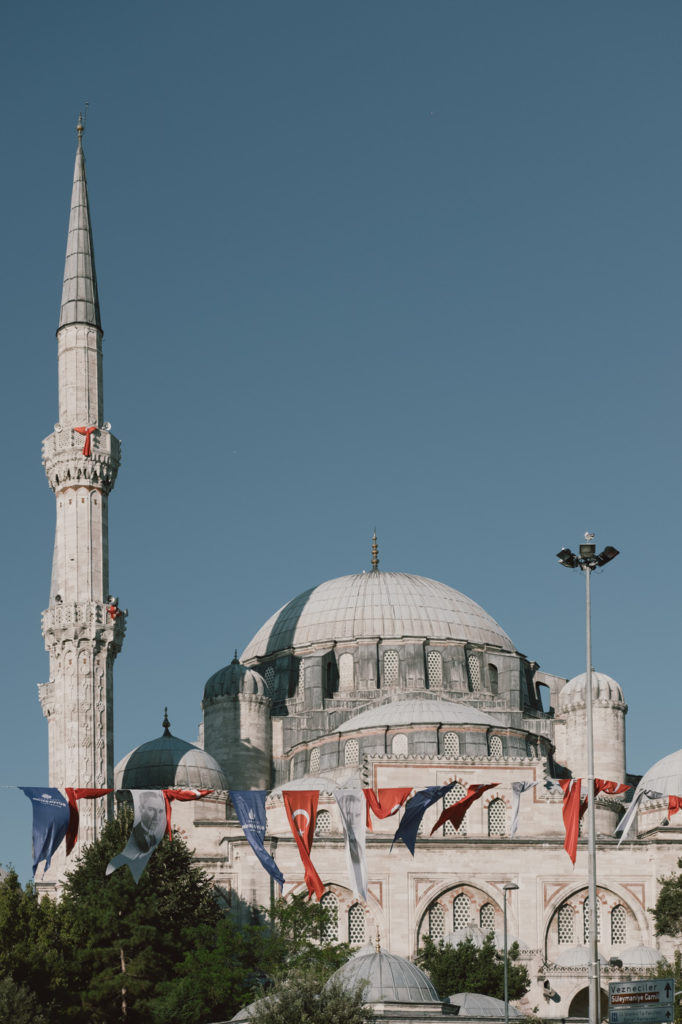
Much of the thick menu is similar to Turkish fare of kebabs and flatbreads. But it doesn’t take long to notice departures from local norms: laghman noodles—available in both a soup and stir-fried. Sour-and-spicy tofu. Stir-fried green beans. Soup dumplings. Rice cooked with lamb shank and sweet carrot.
This is the cuisine of the Uyghurs: a Turkic ethnic group that primarily lives in Xinjiang province in Northwestern China. Istanbul, some six thousand kilometers from their ancestral homeland, is the unofficial capital of the Uyghur diaspora.
“Xinjiang means ‘new place.’ They gave us this name seventy years ago,” says Hatice, a Uyghur university student who speaks with me on the condition I don’t use her last name or photograph her. Like most of Istanbul’s Uyghur community, Hatice still has family in Xinjiang, and is fearful they could face consequences if she’s identified as an activist.
Hatice prefers to use the Uyghur name for Xinjiang, “East Turkestan.” The contentious title reveals that like neighboring Kazakhstan and Kyrgyzstan, the majority of Xinjiang’s inhabitants are Turkic Muslims. After a couple of brief stints as an independent state in the early twentieth century, Xinjiang came under Communist control in 1949. Ankara has long defied Beijing by offering Uyghurs political asylum in Turkey.
“When Turks see my face, they think I am from Japan or China,” Hatice says. “But when I tell them I am from East Turkestan they say, ‘Welcome, you are our sister.’”
Initially, Hatice had come to Turkey on vacation with her mother and sisters, but after hearing that family friends had been detained by the Chinese government, they all decided to stay.
“Since 2017, there’s been a campaign by the Chinese government that’s targeted almost all ethnic Uyghurs in the country. For decades, there’s been campaigns by the government against any sighers who demonstrated any dissent or disloyalty to the state,” says Sean R. Roberts, associate professor at George Washington University and author of the book The War on the Uyghurs: China’s Internal Campaign Against a Muslim Minority. “But something changed in 2017 when they started a more systematic approach to containing the Uyghur people. The center of this has been the establishment of mass internment camps.”
Chinese authorities deny the allegations, stating some of the facilities are “re-education centers” designed to rehabilitate Islamic extremists. But reports from survivors tell of torture, forced labor, sterilization, and other human rights abuses.
“It’s a campaign focused on destroying Uyghur identity,” says Roberts. “This is something of a cultural genocide. It’s similar to what’s been pushed on Indigenous people around the world where you have a large colonial power taking over a region and pushing out and marginalizing the Indigenous people—in this case, the Uyghurs.”
Analysts estimate more than one million Uyghurs have been detained over the last five years. For most of the Uyghur community in Turkey, it’s impossible to determine the status of their loved ones.
“I have no one from China to talk to, to tell me the situation,” Hatice says. “They’re afraid to write to us.”
I meet Hatice for lunch at Zafer Uygur Restaurant, a short walk from the Fındıkzade stop on the T1 tram line. The T1 weaves through Istanbul’s old city, making stops at the Spice Bazaar, the Hagia Sophia, and Blue Mosque. But most tourists never make it past the Grand Bazaar, which is exactly when the tram starts to fill with Istanbul’s disparate immigrant communities. Stretching between Aksaray and Zeytinburnu, it’s along this tram line that one can find the lion’s share of Uyghur restaurants, not to mention Uzbek, Kazakh, Syrian and Yemeni.
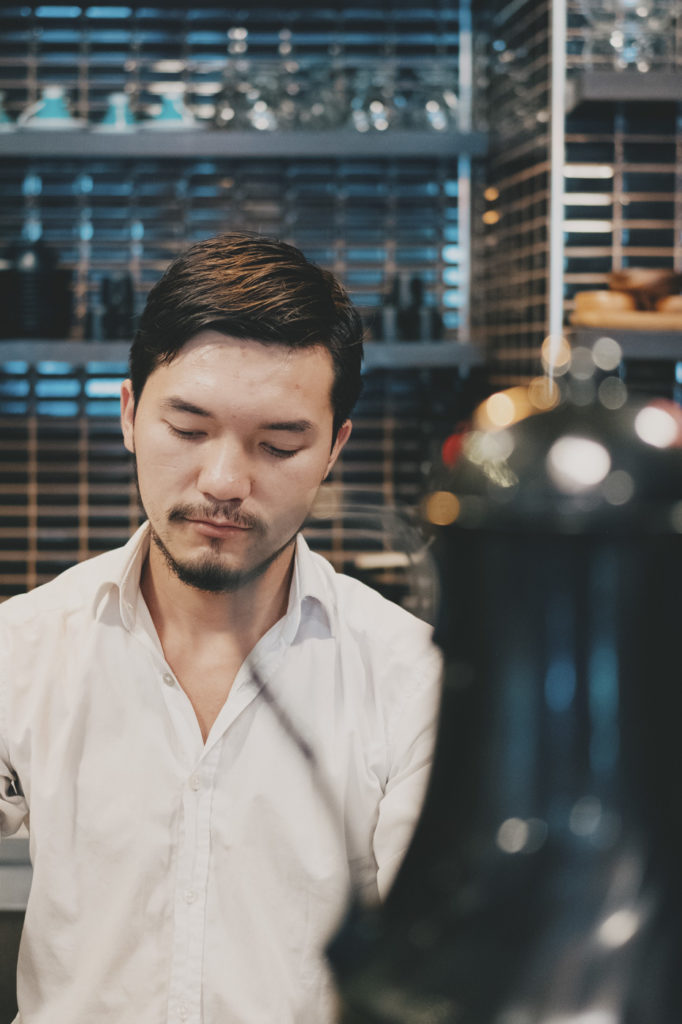

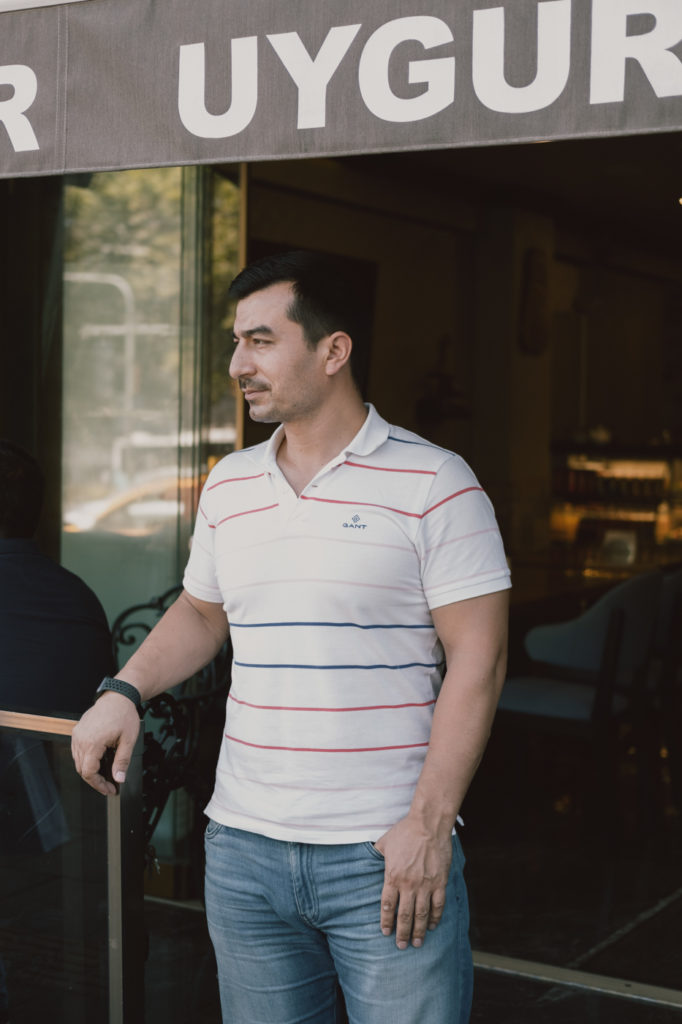
We find a table upstairs and proceed to order far too much food for two people, but Hatice is eager to show off the diverse array of Uyghur cuisine. First, the kebabs—chunks of mutton marinated in cumin and onion—arrive on long, Arabic-engraved skewers. Soon, our kebabs are joined by a towering plate of stir-fried beef with shiitake mushrooms and a large bowl of mapo tofu, served with a side of white rice.
Hatice explains that many of the key ingredients, absent in Turkish cuisine, come from Uyghur-operated farms outside Kayseri in central Anatolia. Kayseri is arid and mountainous—far closer to Xinjiang’s landlocked, high desert climate than humid Istanbul, surrounded by water on three sides.
On a subsequent visit to Zafer, I discover another favorite: Uygur pilavı, roasted lamb shank cooked with rich, buttery rice and chunks of sweet carrot. But the undisputed staple of Uyghur cuisine is laghman, a wheat noodle which serves as the base of a variety of stir-fries and soups. In the kitchen at Zafer, the chefs arrive hours before lunch each day to hand-roll the thick, tubular noodles from freshly made dough.
“The dough has to be fresh. If some dough is leftover today, it shouldn’t be used tomorrow,” says Fidat, a Uyghur immigrant and barista at a third-wave coffee company.
I meet Fidat at the café located in the upscale Nişantaşı neighborhood. He’s just finished his morning shift, and joins me outside with a pour-over of Rwandan coffee and a bottle of mineral water. By sheer coincidence, the mineral water bottle is covered in Chinese characters. Surprised, Fidat studies the bottle for a second before realizing the Turkish brand was bottled for export to China. Due to the coronavirus, the shipment was canceled and the soda water was distributed locally.
For much of the Uyghur community, the ability to speak and read Mandarin creates a somewhat paradoxical situation. Many Uyghurs find work as translators for Turkish companies doing business with Chinese factories, or even as guides for Chinese tour groups.
After initially moving to Istanbul as a student, Fidat also worked as a translator. Turkish and Uyghur are cognate languages, and Fidat mastered Turkish after only a few months of study. Fidat’s interest in coffee is atypical for the Uyghur community, who traditionally drink black tea steeped with rose petals and saffron.
Unlike Hatice, Fidat is careful to use the official title of his homeland: Xinjiang Uyghur Autonomous Region. He makes it clear from the outset: he’s only going to talk about Uyghur cuisine. “If you say anything political in the article, make sure you say it’s your opinion, not mine,” he says.
He hopes to see a day when Uyghur cuisine is as well-known and respected as other world cuisines. For Fidat, part of the beauty of Uyghur cuisine is the way it draws from both Central Asian and East Asian culinary traditions. Uyghur cities like Ürümqi and Kashgar were major stops on the Silk Road, oasis cities surrounded by uninhabitable desert. But when the People’s Liberation Army took control of Xinjiang in 1949, new flavors and ingredients were introduced into the local cuisine.
“The [use] of soy sauces, soybean vinegar, different kinds of hot sauces—these things mostly come from China,” says Fidat. “But because we’ve lived together in the same culture, as we’ve tasted it, it’s become our food as well.”
___
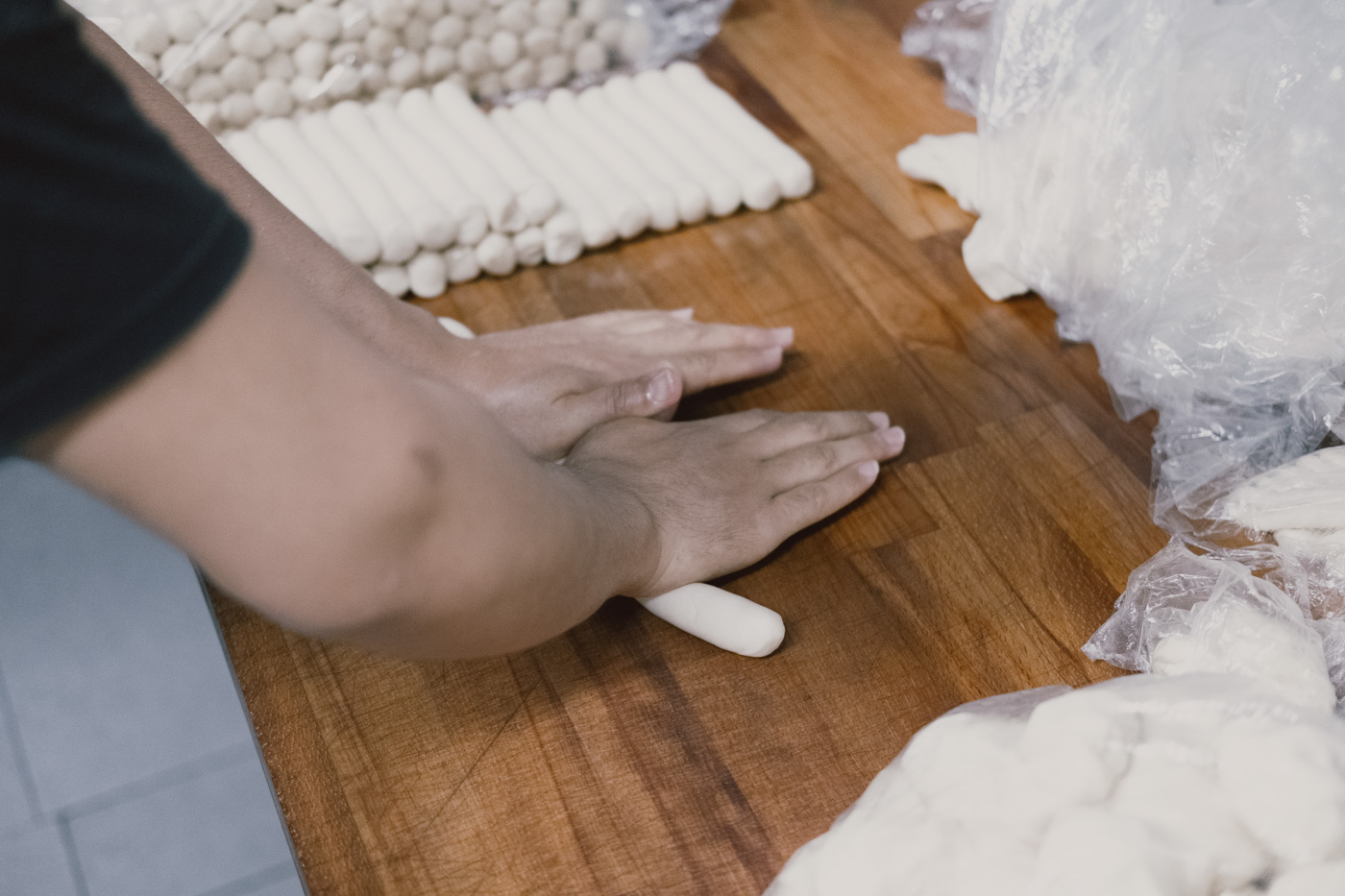
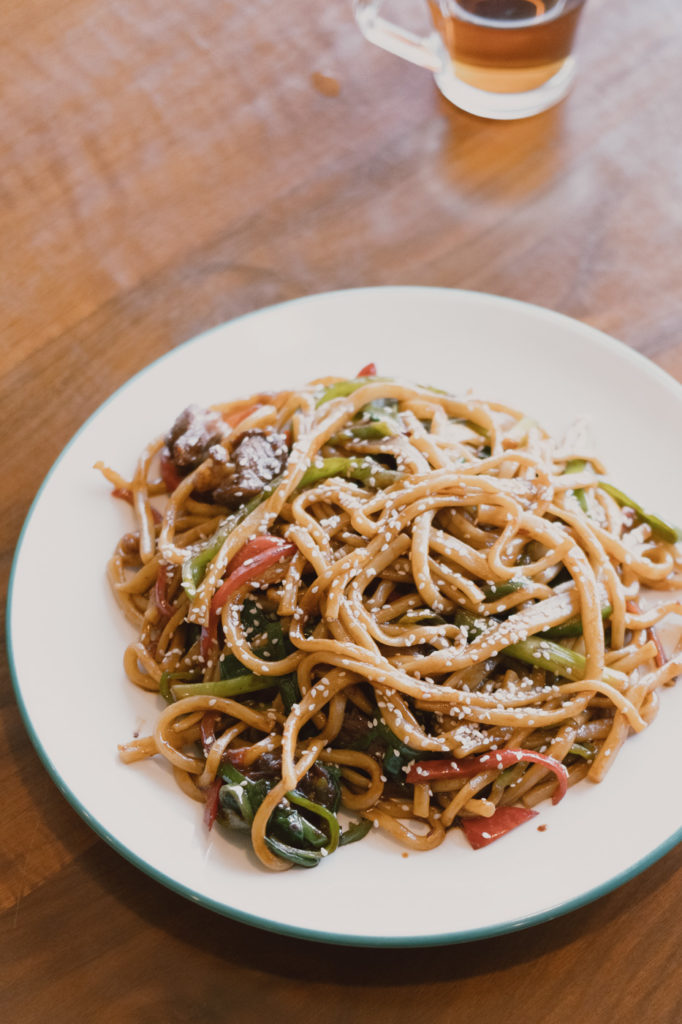
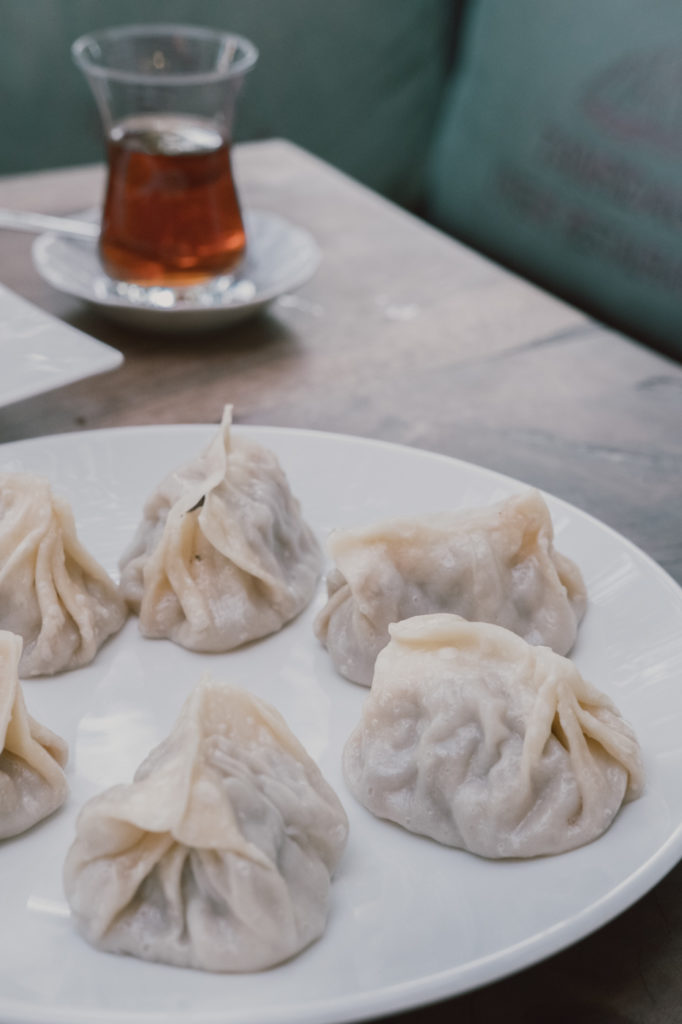
It’s one o’clock, but the Tanrıdağ Uygur Restaurant is almost completely empty. Tanrıdağ—which translates to “God Mountain”—is a mountain range that runs along the Chinese border with Kyrgyzstan and Kazakhstan. Uyghurs historically have lived on both sides of the border, as evidenced by a minority of Istanbul’s Uyghur community, who as former citizens of the Soviet Union speak Russian rather than Chinese as a second language.
Due to Friday prayers, lunch service will start at two p.m. today. A crowd has spilled onto the sidewalk, kneeling in unison on intricately patterned prayer rugs. Although mosque attendance has been in steady decline in recent years in Turkey, Istanbul’s Uyghur community tends to be pious. For most of the people I talked to, religious freedom was the main reason they moved to Turkey.
“In our country, we are not allowed to do our religion. Islam is forbidden,” says Hatice. “I had never worn hijab before I moved to Turkey. I had never been to mosque. You have to show your ID to go in.”
After being forced to practice Islam in secret, coming to Turkey was liberating. “When I came here, I saw mosques everywhere. You can hear the ezan. You can see people wearing hijab and niqāb. I was shocked,” she says.
Back in Xinjiang, the Uyghur community relies on more subtle markers to express their religious heritage.
“Food is something that has served as a marker of identity, vis-a-vis the Han Chinese,” says Roberts. “It’s one of the Islamic practices that’s been most stringently adhered to—halal cooking and eating.”
It’s a sentiment shared by Hatice. “We don’t use pork, and we don’t use alcohol,” she says.
___
“Do you have a problem with spicy food?” The waiter at Tanrıdağ asks me cautiously, when I return a few days later.
He seems to doubt my answer, as he repeats the question not thirty seconds later when I select the spicy tofu to go with the soslu salata (salad with sauce). Like most Uyghur restaurants in Istanbul, the menu accommodates Turkish speakers, preferring to translate rather than transliterate the name of the dishes. (The Uyghur language is typically written in Arabic script.)
The server returns with the salad: cucumbers julienne, pickled and served with generous portions of chili paste, sesame oil, vinegar and cilantro. The heat is intense, but balanced by the sweet cucumber and tangy vinegar. The tofu has large chunks of chopped garlic and whole Sichuan peppercorns dispersed throughout the dish. Remembering Hatice’s earlier recommendation, I spoon the tofu over plain white rice, which quickly absorbs the red broth.
If its kebabs and flatbreads set Uyghur food apart from other Chinese cuisines, it’s the spiciness that distinguishes it from other Turkic cuisines, which tend to rely more on more mild spices like cumin, sumac and thyme. For Hatice, it was a difference first learned when eating Turkish food with friends.
“I told them I wanted the spiciest food in the restaurant,” says Hatice with a laugh. “They gave me an Adana kebab.” Although the red pepper-infused ground lamb dish is on the spicier end of Turkish food, compared to the Sichuan peppers in my tofu, it’s pretty mild.
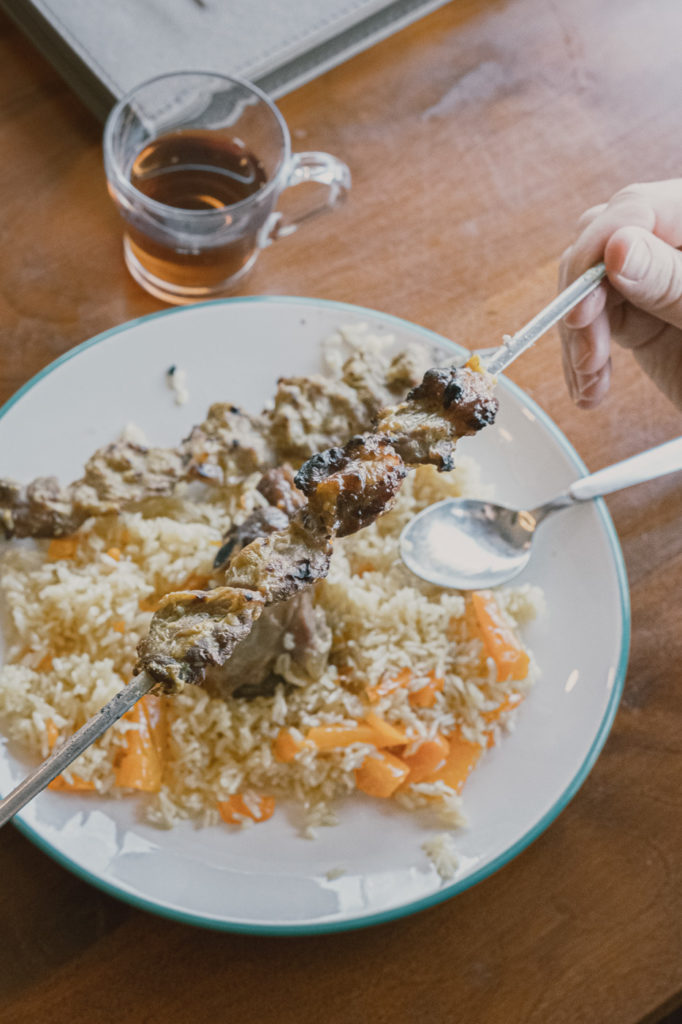
___
Across the city in Beşiktaş, a new sort of Uyghur restaurant opens up amid the fishmongers and craft beer bars that make Çarşı a popular destination for young and old Istanbullus alike. Compared to the more traditional eateries around Fındıkzade, Makana is sleek and modern—a sort of fast-casual approach to laghman. A sign boasts the restaurant makes “Istanbul’s best noodles.”
Whether one prefers the more traditional or contemporary version of laghman, the message is clear: Uyghur cuisine is poised to take a bigger role in Istanbul’s food culture. In Turkey, Uyghur culture is not being erased. The community has the freedom to dream, to innovate, and to explore their cultural identity.
“When I came here, I didn’t know anything about my country, our flag,” Hatice says. The crescent-and-star flag, like a sky-blue version of Turkey’s flag, is a popular symbol among Uyghur activists and a common fixture in Istanbul’s Uyghur restaurants. She tells me, “The blue symbolizes the freedom of the sky.”

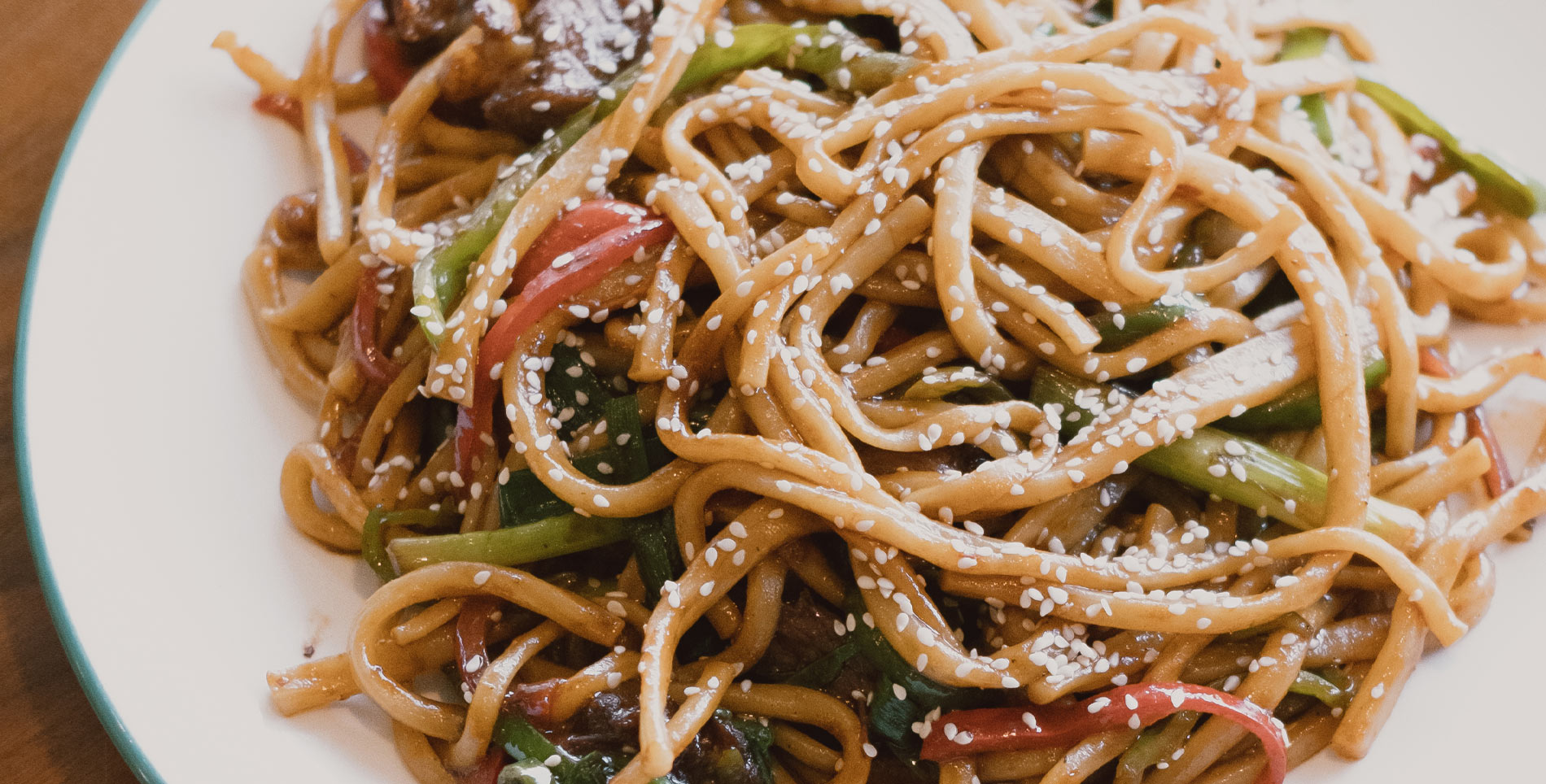

Our comments section is for members only.
Join today to gain exclusive access.